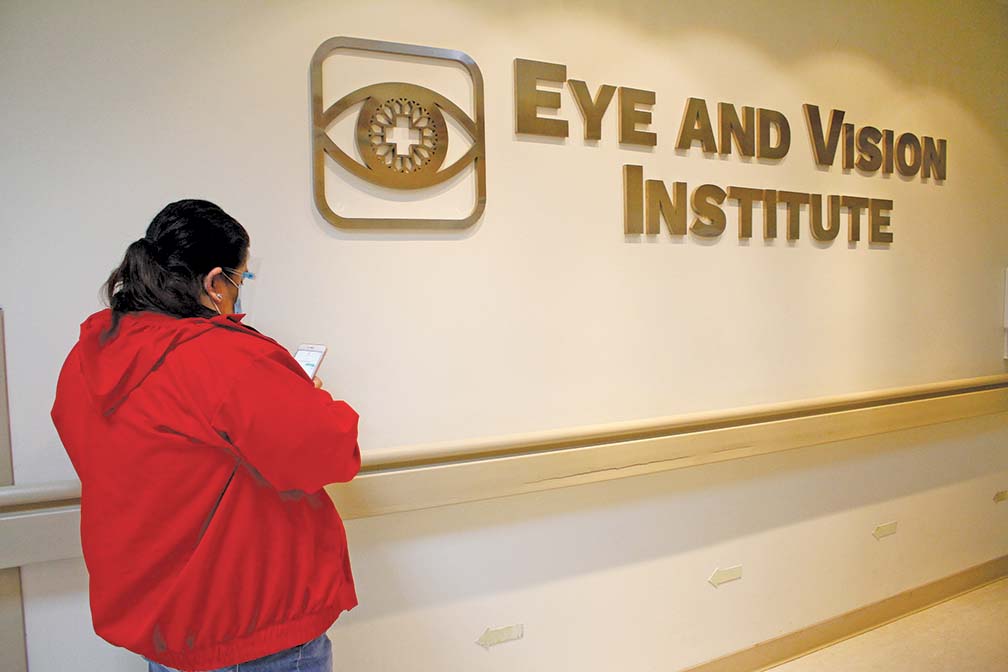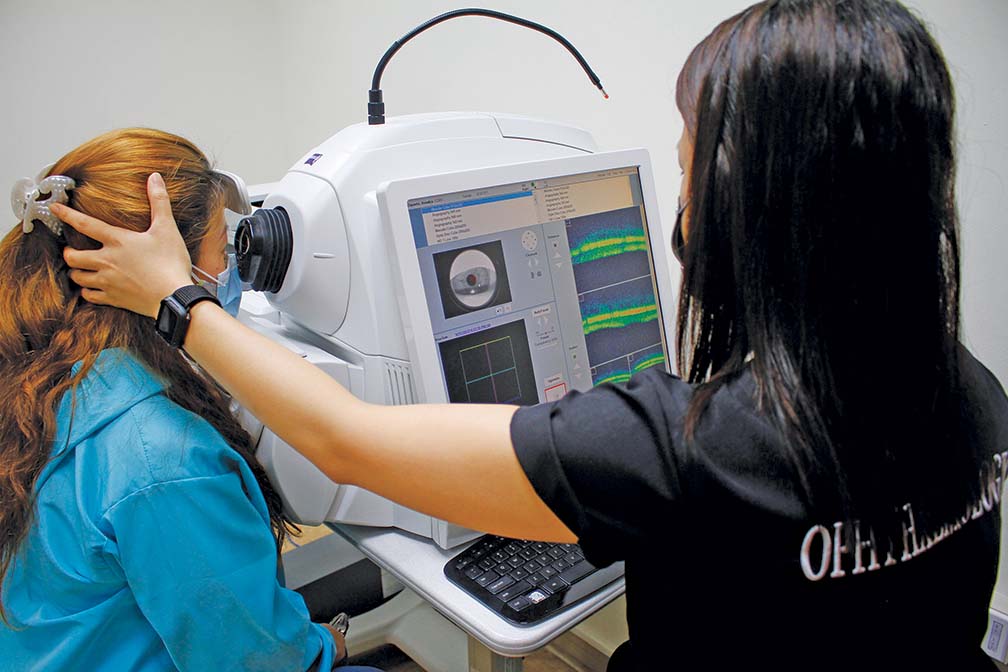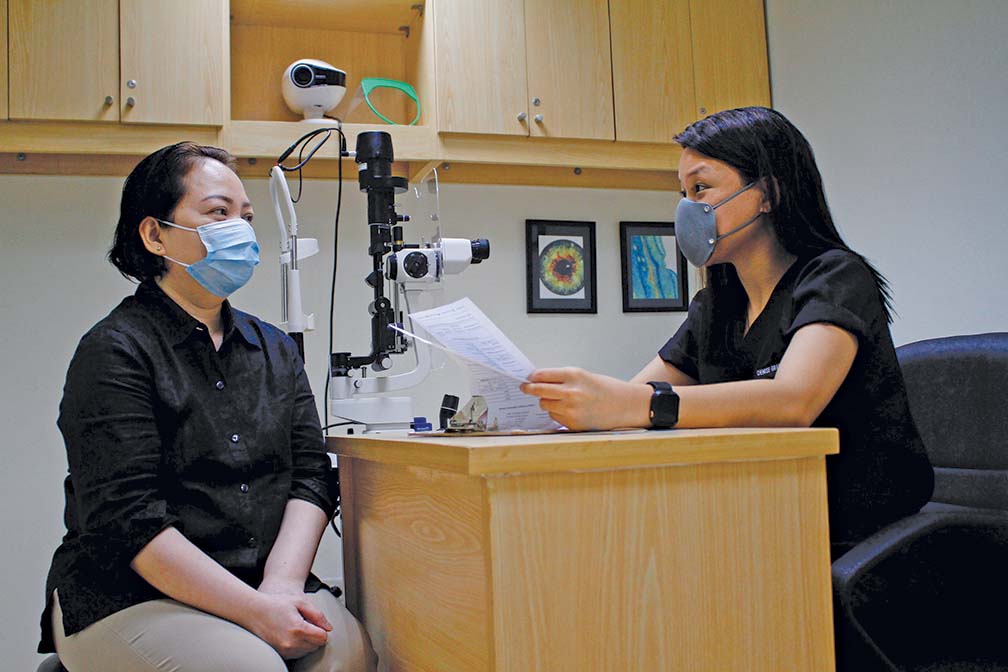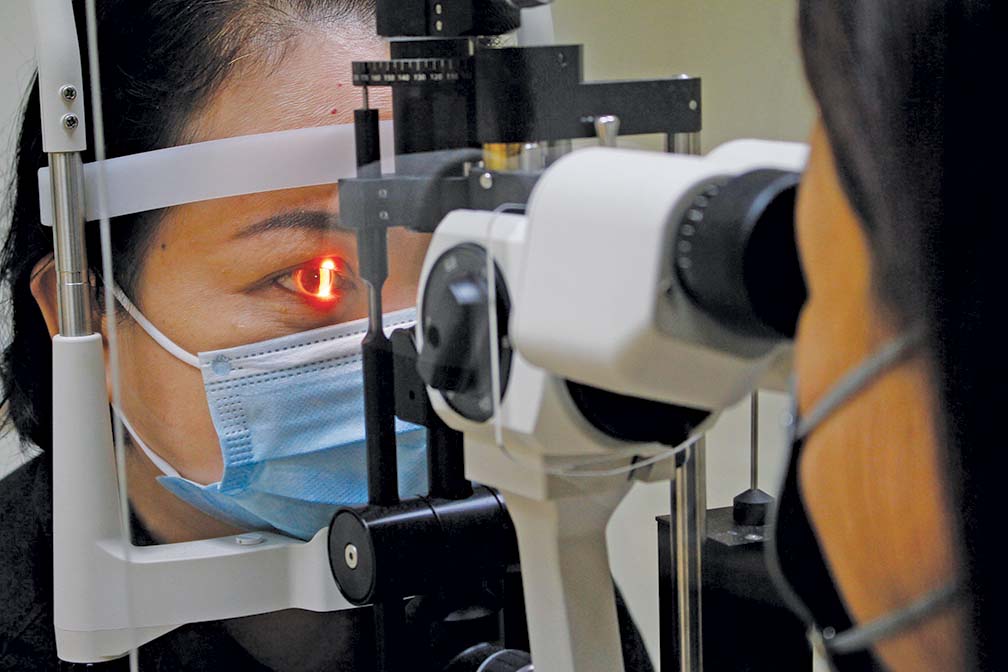If you have diabetes, you may have to deal with its complications. One of the complications that may crop up if you do not control your blood sugar levels is diabetic retinopathy, a condition that affects your eyesight.
According to Dr. Receival P. Salongcay, consultant ophthalmologist and vitreorentinal surgeon at the Eye and Vision Institute of The Medical City, diabetic retinopathy (DR) is a disease where the small blood vessels of the retina, which is the internal lining of the eye, are damaged due to complications brought about by diabetes.

“In persons with diabetes, the high blood sugar level causes a reaction to the walls of the retinal blood vessels which causes them to get blocked. The retina will try to grow new blood vessels to replace the damaged ones, but these new blood vessels are abnormal and do not develop properly, causing them to rupture and bleed out,” Dr. Salongcay explained.
“DR may be asymptomatic in the early stages but can be potentially blinding if left undetected and untreated,” he added.
While there is no published national study on the prevalence of DR in the Philippines, data from the Philippine Eye Research Institute estimates that 18.7% of patients with diabetes have moderate DR or even worse.
“This finding suggests that there is a need to improve the current diabetes awareness and screening programs in the country,” Dr. Salongcay said.
The symptoms to look out for if you suspect you have DR include the blurring of your vision that does not improve even if you have already been given corrective eye glasses, you see floaters, black spots and experience visual field abnormalities. These visual field abnormalities have been described “as a sheet-like structure obstructing a portion of the patient’s view.”
“In some advanced DR cases, patients may report eye pain and eye redness,” he said. “It is also important to note that many patients will not experience any symptom in the early stages of the disease.”
To be diagnosed for DR, the ophthalmologist conducts a full ophthalmologic history taking of the patient as well as a physical exam. This includes a dilated retinal exam “where eye drops are placed in the patient’s eyes to make the pupils bigger to allow the evaluation of the internal eye.”

“The posterior portion of the internal eye is then evaluated for the presence of abnormal blood vessels, hemorrhage or bleeding, and yellowish deposits called exudates, an indication that there is swelling inside the eye,” Dr. Salongcay explained. “In some cases, diagnostic exams that scan and take photographs of the eyes may assist clinicians in evaluating for DR.”
Most mild cases of DR will not require treatment as patients will only need to observe their blood sugar levels and visit their ophthalmologist on a regular basis.
“In severe cases, patients can be treated using laser therapy, injection of medication into the eyes or surgery,” he said. “Even with treatment, however, some advanced cases of DR can result in irreversible vision loss.”
To prevent DR, patients are advised to strictly monitor their blood sugar. Diabetic patients are advised to follow up closely with their primary care physician, internist or endocrinologist in order to properly manage their blood sugar and other pre-existing conditions like hypertension.
“Compliance with the prescribed medications, diet and lifestyle modifications should be strictly observed. Surveillance for diabetic retinopathy also includes a regular eye examination by an ophthalmologist,” Dr. Salongcay stressed.
Dr. Salongcay reiterated that “the most important measure in preventing vision loss from diabetes is a good control of blood sugar.”

“Remember DR is a complication of diabetes. Therefore, if a patient’s diabetes is uncontrolled, the retinopathy can still worsen even if we perform laser or surgery on the eyes,” he explained. “The second most important measure in preventing vision loss from DR is having regular eye exams with an ophthalmologist.”
For most diabetic patients, Dr. Salongcay said, the initial eye evaluation should be at the time of diabetes diagnosis with subsequent visits at least once a year thereafter.
“More frequent ophthalmology checks may be required depending on the severity of findings on the initial eye exam,” he said. “Cessation of smoking also helps to halt the development and progression of DR.”


